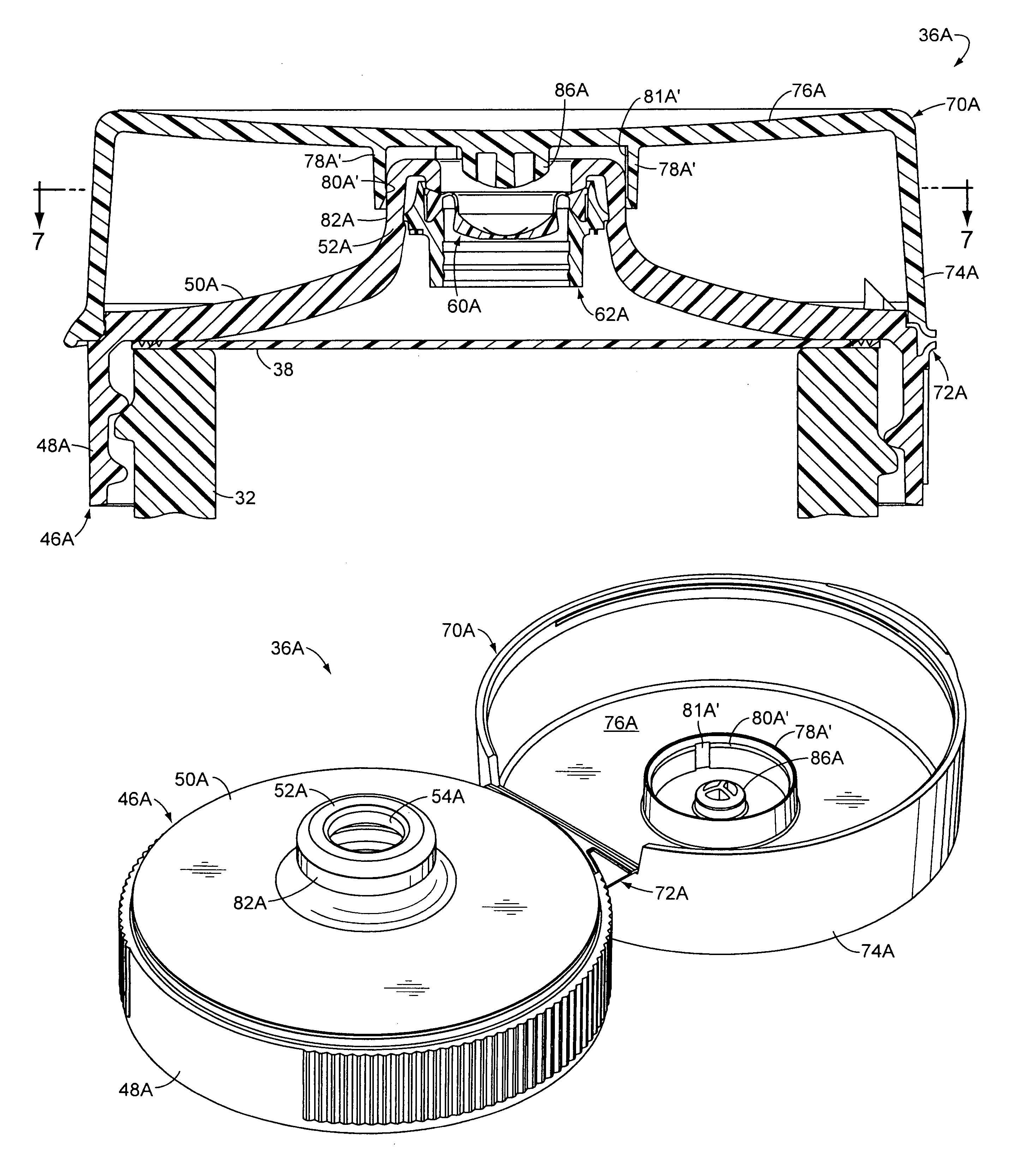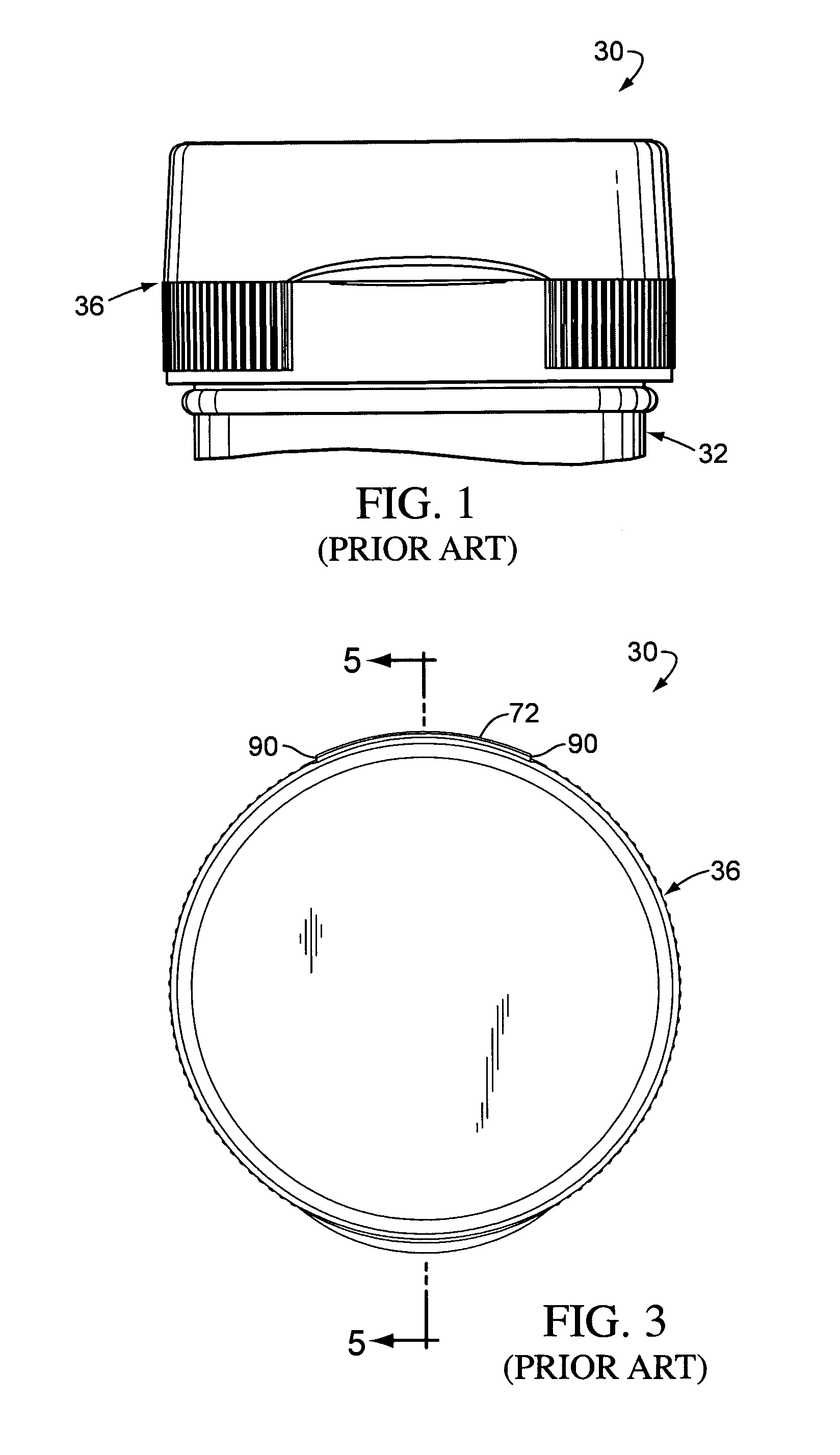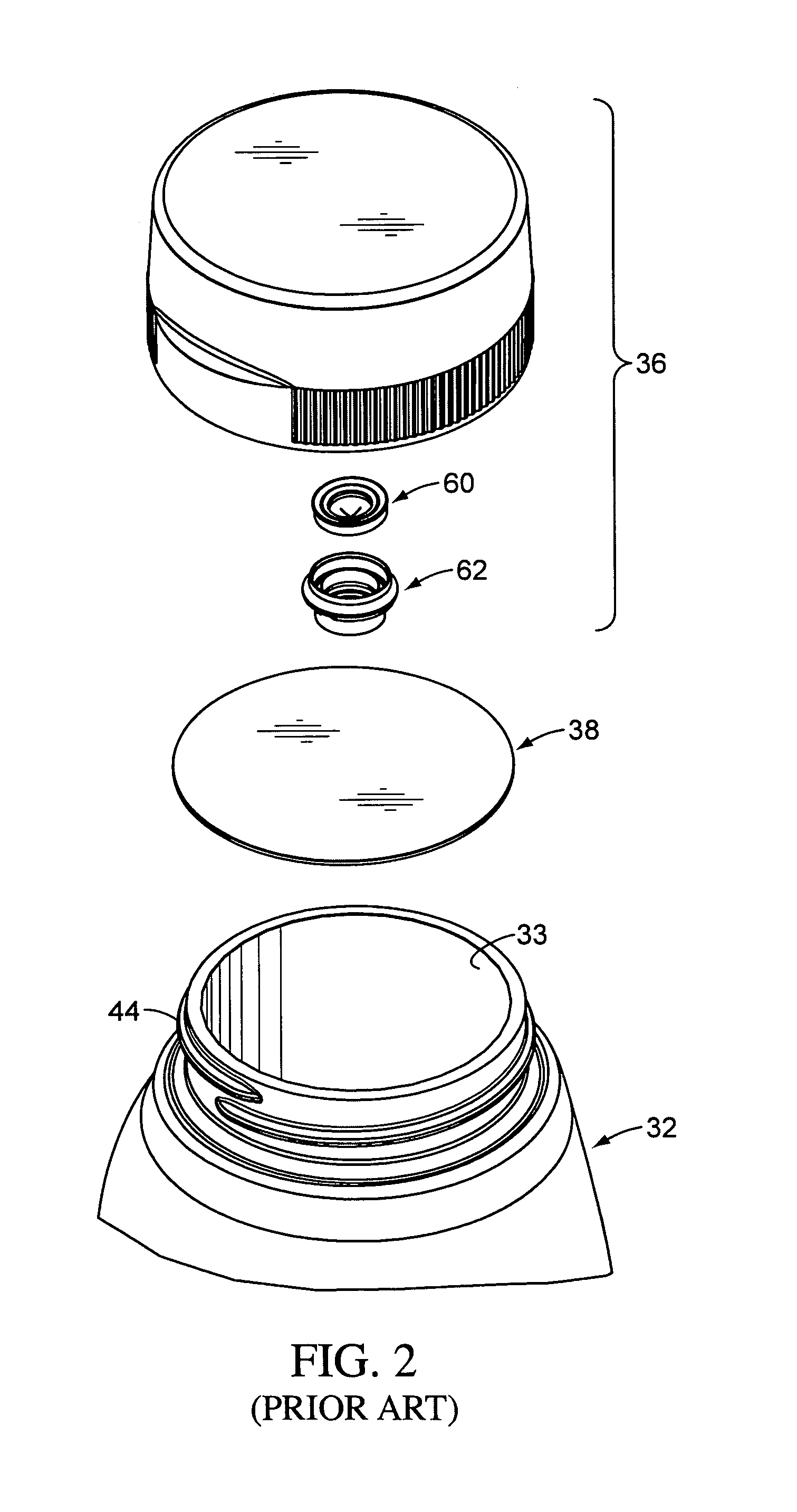Packaging process employing a closure orifice seal vent
a technology of venting and sealing vents, applied in the direction of packaging, packaged goods types, instruments, etc., can solve the problems of easy bucklers or collapses less desirable packaging 30/b>, and easy collapse of container walls during labeling processes or stacking processes. , to achieve the effect of significantly reducing minimizing, if not eliminating, the infiltration of cooling water
- Summary
- Abstract
- Description
- Claims
- Application Information
AI Technical Summary
Benefits of technology
Problems solved by technology
Method used
Image
Examples
Embodiment Construction
[0056]This specification and the accompanying drawings disclose only one specific form of the process of the invention. The invention is not intended to be limited to the described embodiment, however. The scope of the invention is pointed out in the appended claims.
[0057]The process of this invention is suitable for use with a variety of conventional or special containers having various designs, the details of which, although not illustrated or described, would be apparent to those having skill in the art and an understanding of such containers. Therefore, the particular container illustrated and described herein is not intended to limit the broadest aspects of the present invention.
[0058]According to the process of the present invention, a product can be provided and processed in a package which can employ a closure with a vent system which will function surprisingly to minimize the accumulation of moisture inside the package when the package is processed through a cool water show...
PUM
| Property | Measurement | Unit |
|---|---|---|
| width | aaaaa | aaaaa |
| radial thickness | aaaaa | aaaaa |
| diameter | aaaaa | aaaaa |
Abstract
Description
Claims
Application Information
 Login to View More
Login to View More - R&D
- Intellectual Property
- Life Sciences
- Materials
- Tech Scout
- Unparalleled Data Quality
- Higher Quality Content
- 60% Fewer Hallucinations
Browse by: Latest US Patents, China's latest patents, Technical Efficacy Thesaurus, Application Domain, Technology Topic, Popular Technical Reports.
© 2025 PatSnap. All rights reserved.Legal|Privacy policy|Modern Slavery Act Transparency Statement|Sitemap|About US| Contact US: help@patsnap.com



